
Food and Environmental Virology
Scope & Guideline
Bridging Gaps Between Viral Pathogens, Food Science, and Public Health
Introduction
Aims and Scopes
- Surveillance and Epidemiology:
The journal emphasizes research on the surveillance of viral pathogens in food and environmental matrices, including wastewater and surface water, to track outbreaks and assess public health risks. - Molecular Virology and Pathogenesis:
Research that delves into the molecular characteristics of viruses, including genetic sequencing and phylogenetic analysis, is a core focus, helping to understand the mechanisms of virus transmission and infection. - Viral Detection and Quantification Techniques:
The journal showcases studies that develop and evaluate advanced methodologies for detecting and quantifying viruses in various matrices, including food, water, and environmental samples. - Virus Inactivation and Control Strategies:
Research on the effectiveness of disinfection methods and treatments to inactivate viruses in food and water sources is a significant area of interest, contributing to food safety and public health. - Emerging Viral Threats:
The journal covers emerging viral pathogens and their implications for food safety and environmental health, particularly in the context of changing ecosystems and global health challenges.
Trending and Emerging
- Wastewater-Based Epidemiology:
There is a significant increase in research utilizing wastewater analysis to monitor viral outbreaks, particularly SARS-CoV-2, showcasing its relevance in public health surveillance. - Advanced Molecular Techniques:
Emerging methodologies, such as nanopore sequencing and machine learning for virus characterization, are gaining traction, indicating a trend towards integrating technology into virology research. - Natural and Chemical Virus Inactivation Methods:
Research focused on the efficacy of natural compounds and innovative chemical treatments for virus inactivation in food and water is on the rise, reflecting a growing interest in sustainable and effective disinfection strategies. - Viral Persistence and Environmental Stability:
Studies assessing the persistence of viruses in environmental matrices, particularly under varying conditions, are becoming more prominent, highlighting the importance of understanding viral survival for risk assessment. - Interdisciplinary Approaches to Viral Research:
The journal is increasingly publishing interdisciplinary studies that combine virology with fields such as microbiology, ecology, and public health, reflecting a holistic approach to understanding viral threats.
Declining or Waning
- Traditional Foodborne Virus Studies:
There seems to be a decreasing emphasis on classical studies of well-established foodborne viruses, such as Hepatitis A and Rotavirus, as newer methodologies and emerging pathogens take precedence in research. - General Environmental Impact Studies:
Research that broadly assesses environmental impacts of viruses without specific focus on food safety or public health implications has been less frequent, indicating a shift towards more targeted studies. - Virus Detection in Non-Food Matrices:
The focus on detecting viruses in non-food environmental matrices, such as air samples or non-water environments, appears to be declining, with more emphasis being placed on food and water safety.
Similar Journals
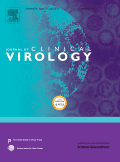
JOURNAL OF CLINICAL VIROLOGY
Advancing the Frontiers of Viral ResearchJournal of Clinical Virology, published by Elsevier, stands at the forefront of virology research, focusing on the clinical implications of viral diseases. With an impressive impact factor representative of its Q1 categorization in both Infectious Diseases and Virology, this journal is essential for researchers and healthcare professionals aiming to keep pace with evolving knowledge and treatments in virology. Since its inception in 1998, it has provided a vital platform for the dissemination of significant breakthroughs, now continuing through to 2024. The journal boasts competitive Scopus ranks, placing it in the 95th percentile for Infectious Diseases and the 91st percentile for Virology. Scholars can benefit from its selective Open Access options, promoting widespread access to cutting-edge research. With an ever-increasing demand for innovative solutions to viral infections, Journal of Clinical Virology remains dedicated to fostering advancements in the field, making it a key resource for anyone invested in virology and infectious disease management.
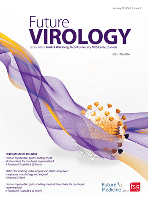
Future Virology
Fostering Collaboration for Viral BreakthroughsFuture Virology, published by Future Medicine Ltd, is an essential journal dedicated to advancing the understanding of virology in the contemporary scientific landscape. With an ISSN of 1746-0794 and an E-ISSN of 1746-0808, this journal serves as a platform for researchers and practitioners in the field to publish high-quality, peer-reviewed articles that explore novel discoveries, innovative therapeutic strategies, and the implications of viral research on global health. Operating from the United Kingdom and maintaining a commitment to rigorous scientific inquiry, Future Virology is categorized in the Q4 Quartile for Virology according to the latest Scopus rankings, with a position of Rank #48/80 and a percentile of 40th in the Virology category. Although it currently does not offer open access, the journal strives to disseminate critical insights that benefit a wide range of professionals, researchers, and students engaged in virology and related fields. By bridging the gap between basic research and practical applications, Future Virology plays a crucial role in fostering innovation and collaboration in the ever-evolving virology landscape.

Journal of Clinical Virology Plus
Connecting knowledge to enhance public health strategies.The Journal of Clinical Virology Plus, published by Elsevier, is an essential resource for researchers and professionals in the fields of virology and infectious diseases. Launched in 2021, this journal aims to bridge the gap between clinical research and application, fostering a deeper understanding of viral pathogenesis, diagnostics, and therapeutic strategies. With an ISSN of 2667-0380, this open-access journal brings cutting-edge findings to the global scientific community, facilitating the rapid dissemination of knowledge critical for advancing public health. Positioned in the Q3 category for both Infectious Diseases and Virology in 2023, its ranking reflects its growing influence and relevance in the academic landscape. The journal strives to support innovative research, collaborative studies, and comprehensive reviews that address contemporary challenges in clinical virology. As it converges through the years from 2021 to 2024, Journal of Clinical Virology Plus aims to be a central hub for vital discussions and breakthroughs in this dynamic field.
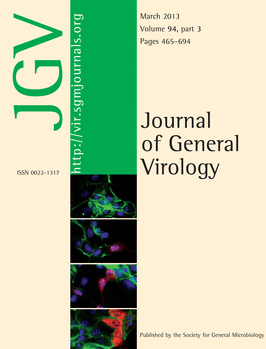
JOURNAL OF GENERAL VIROLOGY
Advancing virology through rigorous research.The JOURNAL OF GENERAL VIROLOGY, published by the Microbiology Society, is a premier academic journal dedicated to advancing the field of virology. Established in 1967, this influential journal covers a wide spectrum of research from basic virology to applied studies, serving as a vital resource for researchers, professionals, and students alike. With its ISSN 0022-1317 and E-ISSN 1465-2099, the journal is recognized for its rigorous peer-review process and high-quality publications, attaining a commendable Q2 ranking in the Virology category for 2023. The journal's focus on disseminating innovative findings and fostering critical discussions contributes significantly to the understanding of viral mechanisms, disease processes, and potential therapeutic strategies. Although it does not currently offer Open Access options, the journal remains accessible to the academic community, with a strong commitment to supporting virology research globally. As part of Scopus' top-tier rankings, illustrating its impact within the category of Immunology and Microbiology, the JOURNAL OF GENERAL VIROLOGY continues to play a pivotal role in shaping the future of virological science.

Viruses-Basel
Transforming Virology Research into Global SolutionsViruses-Basel, published by MDPI, is a leading interdisciplinary journal focused on the field of virology and infectious diseases, offering a platform for the rapid dissemination of high-quality research. Established in 2009, this open access journal has become an essential resource for researchers and health professionals, ensuring that critical findings are readily available to a global audience. With an impressive Q1 ranking in Infectious Diseases and a Q2 ranking in Virology as of 2023, the journal reflects its commitment to impactful research, validated by its notable positions within Scopus categories—ranked #84 out of 344 in Medicine: Infectious Diseases and #27 out of 80 in Immunology and Microbiology: Virology. The journal adheres to high standards of academic rigor, and by embracing an open access model, it promotes unrestricted access to scientific knowledge, fostering collaboration among researchers, professionals, and students alike. Situated in Basel, Switzerland, the journal serves as a cornerstone in the dissemination of research findings related to viral diseases and their implications on public health.
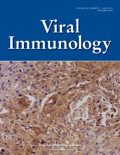
VIRAL IMMUNOLOGY
Connecting cutting-edge research with clinical practices in viral immunology.Viral Immunology, published by Mary Ann Liebert, Inc, stands as a prominent journal dedicated to advancing the understanding of the interplay between viral infections and host immune responses. With a strong focus on immunology, molecular medicine, and virology, the journal provides a platform for the dissemination of high-quality research findings and innovative methodologies that could shape the future of these critical fields. Although it currently holds a Q3 rating across its relevant categories and a respectable ranking within the Scopus database, Viral Immunology continues to strive for excellence with a commitment to publishing influential research that informs both academic and clinical practices. The journal accepts submissions in various formats—original research, reviews, and commentaries—catering to a diverse readership that includes researchers, professionals, and students engaged in the biological and medical sciences. Readers can anticipate insightful articles that address urgent challenges in immunological responses to viral infections, paving the way for new therapeutic strategies and public health initiatives.

Frontiers in Virology
Shaping the Future of Virology Through CollaborationFrontiers in Virology, published by FRONTIERS MEDIA SA, is an innovative open-access journal dedicated to advancing the understanding of viral biology, pathogenesis, surveillance, and control strategies. With the rapid evolution of viral threats, this journal serves as a critical platform for researchers, professionals, and students to disseminate and access high-quality research, reviews, and perspectives in virology. The journal places a strong emphasis on interdisciplinary approaches, promoting collaborative efforts that drive breakthroughs in the field. While the specific impact factor and H-index details are currently unavailable, Frontiers in Virology is committed to rigorous peer review and integrity in scientific publishing. Authors and readers will benefit from the extensive reach provided by open access, making groundbreaking insights available to a global audience, thus contributing significantly to the ongoing dialogue in virology and public health.
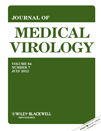
JOURNAL OF MEDICAL VIROLOGY
Transforming Knowledge: Where Virology Meets Innovation.JOURNAL OF MEDICAL VIROLOGY is a prestigious academic publication dedicated to advancing the field of virology and infectious diseases. Published by WILEY, this journal has established itself as a cornerstone within the scientific community since its inception in 1977, and it will continue to provide cutting-edge research until 2024. With an impressive impact factor that places it in the Q1 quartile for both Infectious Diseases and Virology, the journal ranks 14 out of 344 in Medicine - Infectious Diseases and 6 out of 80 in Immunology and Microbiology - Virology according to Scopus metrics. Its focus encompasses a broad spectrum of topics, including viral pathogenesis, diagnostics, treatment strategies, and epidemiology, making it an essential resource for researchers, clinicians, and students alike. Although not an open-access journal, it provides valuable insights and accessible content for subscribers and libraries. The ongoing commitment to high-quality peer-reviewed articles makes JOURNAL OF MEDICAL VIROLOGY a vital platform for disseminating knowledge and fostering innovation in virology and related fields.

CURRENT HIV RESEARCH
Elevating Conversations in HIV ResearchCurrent HIV Research is a pivotal journal dedicated to the latest advancements in the field of HIV research, published by Bentham Science Publishers Ltd. With a commitment to disseminating high-quality research, this journal serves as a critical resource for researchers, healthcare professionals, and students interested in infectious diseases and virology. The journal has an ISSN of 1570-162X and an E-ISSN of 1873-4251, reflecting its commitment to contemporary digital scholarship. Given its publication history spanning from 2003 to 2024, the journal has continually provided insights and peer-reviewed articles that foster knowledge and innovation in HIV research. Although it currently holds a Q3 ranking in Infectious Diseases and a Q4 ranking in Virology, these rankings underscore its importance as an emerging platform for critical research dialogue. Despite not being an Open Access journal, 'Current HIV Research' ensures that cutting-edge studies reach relevant practitioners and contribute to ongoing discourse in the medical community. By fostering an informed approach to HIV and its implications, this journal is an invaluable asset to those committed to advancing their expertise in this crucial area of health science.
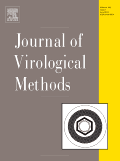
JOURNAL OF VIROLOGICAL METHODS
Transforming viral research with novel methodological insights.Journal of Virological Methods, published by Elsevier, is a prominent peer-reviewed journal dedicated to advancing the methodologies employed in virology research. Since its inception in 1980, this esteemed journal has become a vital resource for researchers, professionals, and students focused on the intricate study of viruses and viral-related diseases. With a current ISSN of 0166-0934 and an E-ISSN of 1879-0984, this journal strives to present innovative techniques and tools that enhance our understanding of virology. Designed for a global audience, it operates in a rigorous academic environment, as reflected by its 2023 Scopus ranking of #40 in the Virology category and its Q3 quartile placement. The journal is committed to fostering open dialogue and collaboration within the scientific community, ultimately contributing to the development of novel strategies and interventions against viral infections. By offering comprehensive insights into virological methodologies, the Journal of Virological Methods continuously serves as a cornerstone for those dedicated to exploring the complexities of viral research.